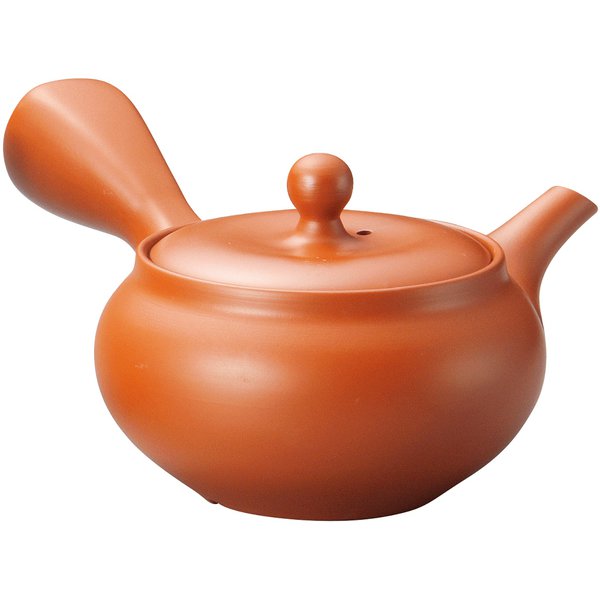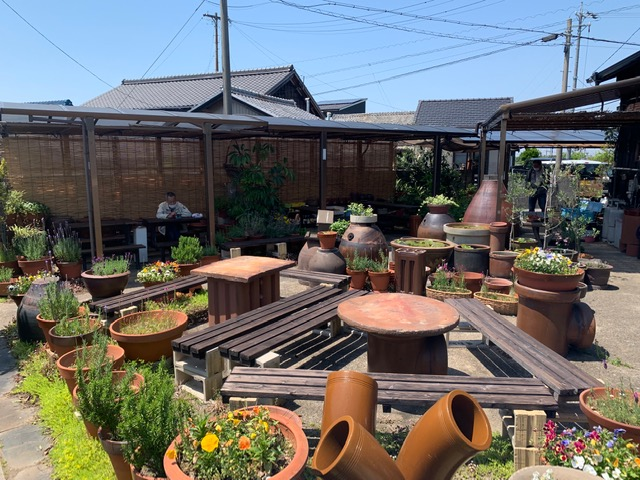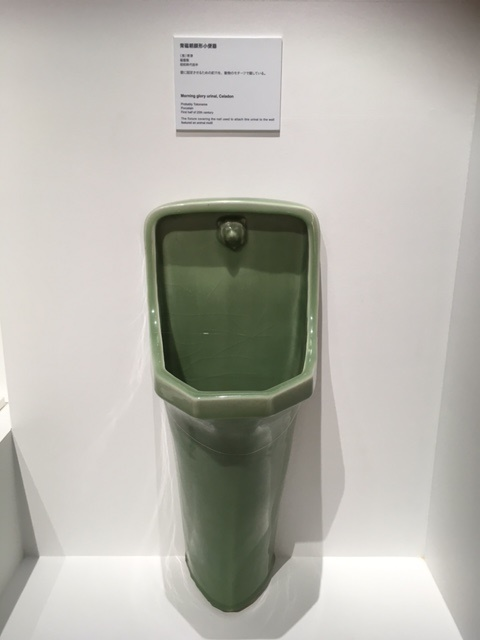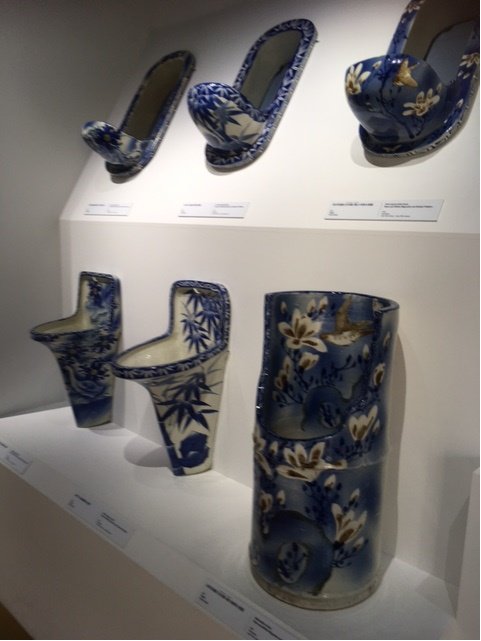Hand-Picked Sayama Tea 手摘み狭山茶
by Johannes Schonherr
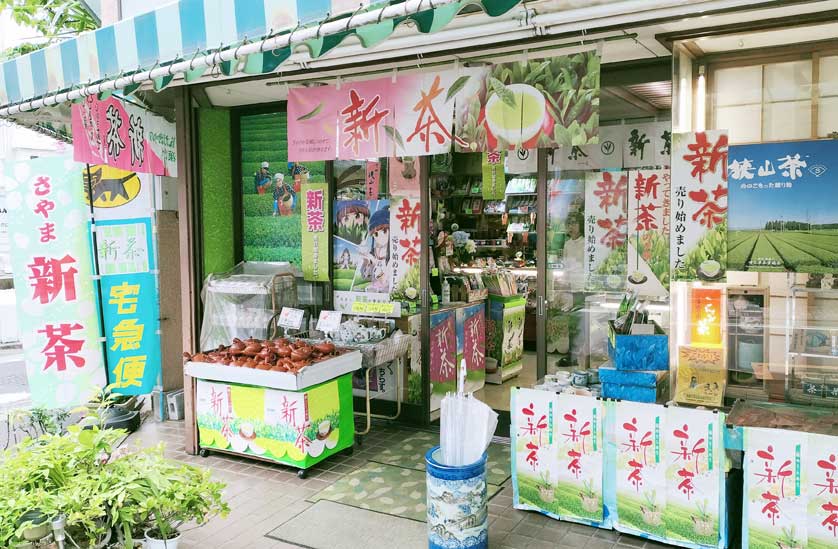 |
| Shincha advertising at a Sayama Tea store in Tokorozawa, Saitama |
In the Sayama tea area northwest of Tokyo, the harvest of the Shincha (新茶), the first tea leaves of the year, takes place in late April / early May. Among tea lovers, this is a highly anticipated harvest since those first leaves are especially tasty and aromatic.
Sayama Shincha is a Sencha tea, which means it is a tea sold in the form of processed, steamed leaves - unlike Matcha which is sold as a powder. About three-quarters of all Japanese green teas are Sencha teas.
 |
| Yamaka-en Sayama Tea field, Tokorozawa |
Japanese Teas
The premium quality is picked by hand by a group of experienced harvest helpers who can decide within fractions of a second which leaves to take, steadily filling their baskets with the highest quality leaves.
Sayama is one of Japan's northern-most tea areas. Winters can be freezing. Tea plants need to be of varieties that can withstand such conditions. Yabukita, a plant originally from Shizuoka that proved to be able to adapt to the more northern climate, turned out to be the first choice for the hand-picked Sayama Shincha.
To withstand the cold of winter, the Sayama tea plants grow thicker leaves resulting in a profound flavor and a rich taste.
An old local minyo folk song, often sung during the harvest in old times, takes the comparisons to the other traditional Japanese tea growing areas lightly: the tea from Uji (near Kyoto), it says, is all about the scent, the tea from Shizuoka is all about the color but Sayama Tea is all about the taste.
Kyoto-Uji is certainly Japan's most famous tea area while Shizuoka produces the bulk of Japanese Green Tea. Sayama, producing tea since the times of the Kamakura Shogunate in the 1300s is up among them as one of the top three traditional Japanese tea production areas.
 |
| Yamaka-en Sayama Tea field ready for hand picking, Tokorozawa |
The Harvest
To get a real feel of the tea, there is nothing better than actually joining the harvest. Take a Seibu Shinjuku Line train to Tokorozawa or Iruma City, walk around the tea fields in April and inquire at the adjoining farms if they need a harvest helper. In most cases, the answer will most likely be a happy "yes."
 |
| Yamaka-en tea harvest by hand, Tokorozawa |
Yamaka Kasuya Tea Farm
At the Yamaka Kasuya family farm in Kita Iwaoka, Tokorozawa that is definitely the case. Their teas are known under the name Yamaka-en (Yamaka Garden).
Give them your phone number and you will receive a call back once the actual harvest days have been decided.
Arrive at the tea field in the morning. You might be a little surprised at the shape of the plants you are directed to. Those are not the neatly trimmed rows of tea plants you see so often in advertising. Those neatly trimmed rows are for machine harvesting. The hand-picking tea also grows in neat rows but the branches stretch out in a much more natural manner.
Wrapped-up shades hang over the tea field. Those have shielded the plants from intense sunlight during the growing period in spring, preventing the ultra-violet rays from damaging the taste of the nascent young leaves.
You receive a basket and are told which leaves to take - only the set of the freshest three leaves right on top. The classical set of tea leaves is often seen in print.
You work the bushes, clipping leaf set after leave set with your fingers. A typical group of harvesters consists of about 20 to 30 people. Many of them are elderly folks being part of other tea-growing families living nearby.
Unfortunately, they don't sing any minyo folk songs during work anymore. But there is constant chatter. The days of the harvest bring many folks together who don't see each other for the rest of the year. There is constant talk about whose children married whom, who had children, who died, and so on. For those folks, a tea harvest is a social event.
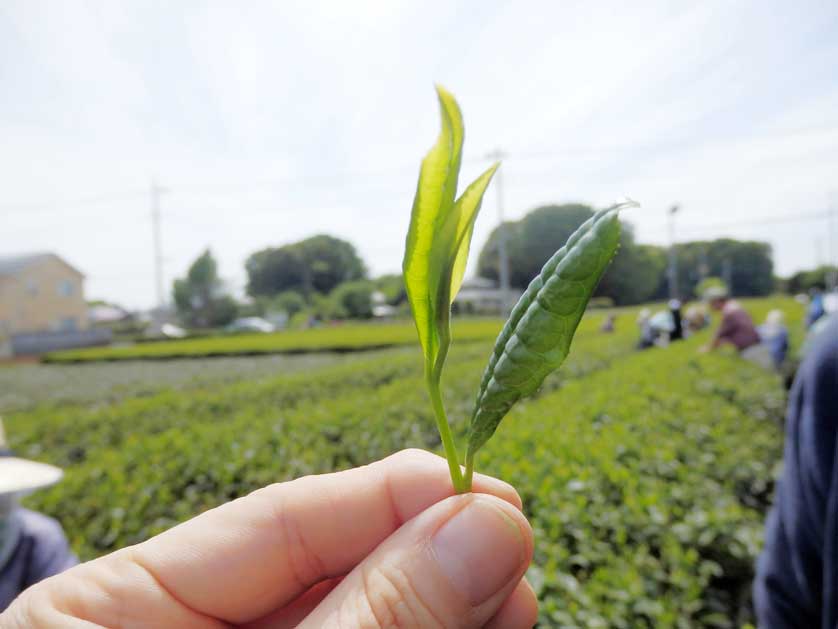 |
| A perfect set of tea leaves |
Tea Tradition
Frequently, the town hall sends young employees to the harvest as well, to let them experience the importance of the tea tradition in their town.
Since the plants are about 160 cm high, it's all rather easy work. You don't have to be afraid of back pains. If you like to squat on the ground for a while and take the leaves from there, it's perfectly okay.
At the end of the working day, usually at 4 pm, you receive an envelope with your salary of the day in cash.
Don't expect to finance your next trip around the world that way. Rather invest the cash in some really good tea by going to the farm shop to buy some top-notch tea about a week later.
By then, the son of the house, running a small tea processing plant right on the premises, will have turned the tea leaves you harvested into high quality Shincha for sale only at the tiny family tea shop on the family premises.
 |
| Hand picked tea leaves in a basket |
Gomeicha
The tea available there is the one you picked by hand. It says Gomeicha (御銘茶) on the outer wrapping though nobody ever uses that word in a conversation. Gomeicha simply means "our best tea", "our flagship" or "signature tea" or something along those lines, indicating that it is the absolute top quality tea produced at the farm.
As with most Japanese green teas, prepare this tea with water heated up to about 70°C (158°F) for optimal taste. For a second brew, use the same temperature, for the third, however, use boiling water.
The Yamaka-en Gomeicha received an award for best Green Tea from the Ministry of Agriculture, Forestry, and Fishery in 2016, 2018, and 2021.
 |
| Yamaka-en Gomeicha tea outer wrapping |
Purchase Japanese Tea
Purchase a range of Japanese tea from GoodsFromJapan.
Related
Ema Votive Plaques
Calpis
Furikake Tsukudani Rice Topping Kinshobai
Hoshigaki
Ishigaki Sea Salt
Ishioka Cedar Leaf Incense
Japanese Mortar & Pestle Suribachi & Surikogi
Jinbei & Samue
Kabosu Juice
Kaki no Tane
Katsuobushi
Kombu Japanese Kelp
Masu Wooden Sake Boxes
Ramune
Shichimi Togarashi
Yatsuhiro & Tatami
Yuzu Kosho Spice from Kyushu
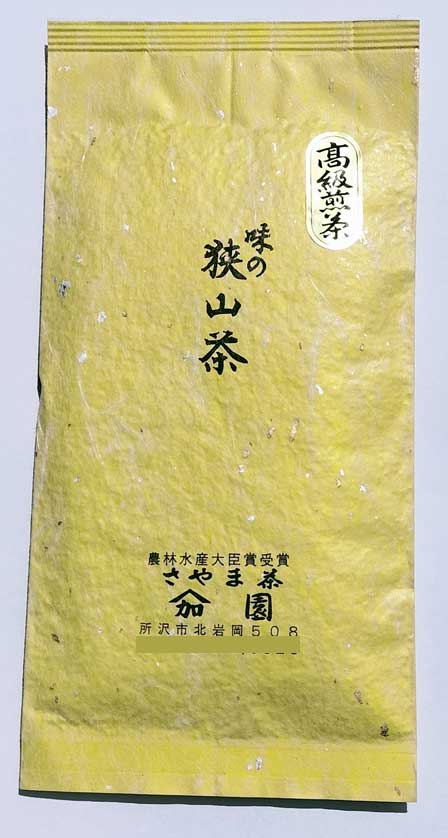 |
| Yamaka-en Gomeicha tea package |
© GoodsFromJapan.com
